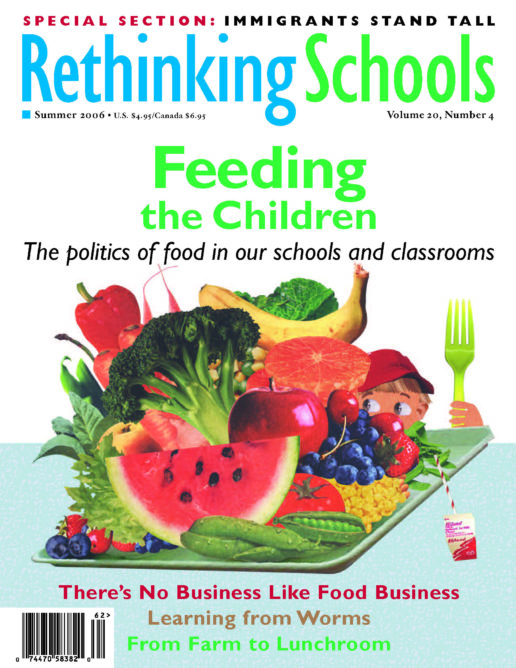Good Stuff 20.4
My grandmother Becky wanted me to be fat, and my mother wanted me to be skinny. Becky escaped from poverty and anti-Semitism in Poland around 1904. For her, being heavy was a sign that you had food and were taking good care of your children and grandchildren.
My mother was born in East Harlem and grew up as a “modern woman,” doing the Charleston and dressing in the most stylish clothes she and my grandmother could design and sew. I could only have pleased my grandmother and mother if I were twins. I think my grandmother won the food wars because of her latkes, which she taught me to make, and which my children ask for once or twice a year. I like making latkes and have even come up with a vegan version for my oldest daughter.
The question of body size and weight has become a major issue for schools, and in the past few years I’ve encountered many high school students who were obsessed with their body size. On the one hand, according to the National Center for Chronic Disease Prevention and Health Pro-motion, the percentage of children considered overweight and at health risk in America has nearly tripled since the 1970s. On the other hand, bulimia and anexoria have also increased significantly. For some students I’ve known it’s a seesaw. They overeat and get too heavy, and then force themselves into a severe regime of fasting and throwing up. The sad thing is that they haven’t found a middle way to live contentedly within their bodies.
Often within families of youngsters with eating disorders (and obesity is as much a disorder as anexoria) there is very little talk or understanding of good nutrition strategies, and it falls to the schools to take responsibility for articulating the specifics of sensible eating and exercise. It’s not that easy to do, as food habits are often hard to change. But there are resources for teachers that provide lessons, strategies, and projects that can be useful for developing curriculum focused on helping students take control of their own food habits and exercise.
These books are useful for integrating healthy eating into the classroom:
Food Is Elementary: A Hands-On Curriculum for Young Students
By Antonia Demas
(Food Studies Institute, 1981)
Food in History
By Reay Tannahill,
(Three Rivers Press, 1989)
Health Is Academic: A Guide to Coordinated School Health Programs
Edited by Eva Marx and Susan Frelick Wooley with Daphne Northrop
(Teachers College Press, 1998)
Kids in Gardens: Student Education Program
Aquatic Outreach Institute
(www.aoinstitute.org)
More Recipes from a Kitchen Garden
By Renee Shepherd and Fran Raboff.
(Ten Speed Press, 1995)
Teaching Organic Farming and Gardening: Resources for Instructors
Edited by Albie Miles and Martha Brown
(Center for Agroecology & Sustainable Food Systems, 2003)
These books for children provide a picture of healthy eating:
A Book of Fruit
By Barbara H. Lember
(Ticknor & Fields, 1984)
The Edible Pyramid: Good Eating Every Day
By Loreen Leedy
(Holiday House, 1984)
I Will Never Not Ever Eat a Tomato
By Lauren Child
(Candlewick, 2000).
What Food Is This?
By Rosemarie Hausherr
(Scholastic, 1994)
In addition, the journal Green Teacher is a great source of teaching ideas and information about food, nutrition, and the politics of food.
Finally, there are nonprofit organizations that advocate for improved nutrition and physical education in schools. Action for Healthy Kids provides great resources, from curriculum to data on health nutrition to dates of school nutrition conferences (www.actionforhealthykids.org).
And, as my grandmother would say, “Essen Sie gut.”
*Jeff Maxim of Swarthmore assisted in gathering resources for this column. Readers interested in trying Herb Kohl’s grandmother’s latke recipe should email him at hkhkohl@aol.com.

